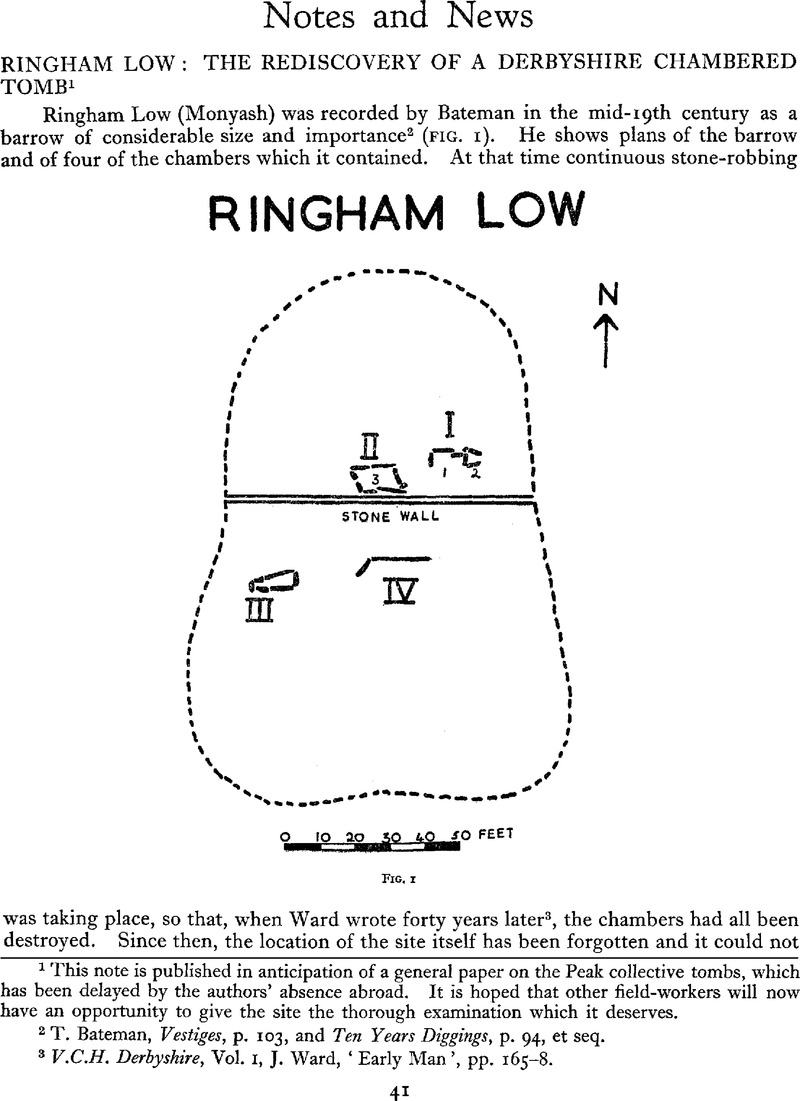No CrossRef data available.
Published online by Cambridge University Press: 02 January 2015

2 Bateman, T., Vestiges, p. 103 Google Scholar, and Ten Years Diggings, p. 94, et seq.
3 V.C.H. Derbyshire, Vol. 1, Ward, J., ‘Early Man’, pp. 165-8Google Scholar.
4 Ordnance Map of the Trent Basin showing distribution of long barrows, megaliths and habitation sites, pp. 10, 17 and 22. It should be noted that the map requires modification as the site is to the east of Monyash.
5 Daniel, G. E., The Prehistoric Chamber Tombs of England and Wales, p. 183 Google Scholar.
6 The type, single-celled, wedge-shaped and entered between two pillar-stones from a passage was discussed by Ward, writing on Five Wells ( Ward, J., Reliq. and III. Arch., N.S. VII, p. 229-42Google Scholar). Daniel, relying exclusively on plans, has obscured several important features. The whole question will be discussed at length in the paper already referred to. It should be added that the Bride-stones has no morphological claim to a place in the Peak group.
7 Most easily accessible in Daniel, op. cit., p. 85, fig. 24.
8 Ward, J., D.A.J., 1890, Vol. XII, p. 118, et seqGoogle Scholar.